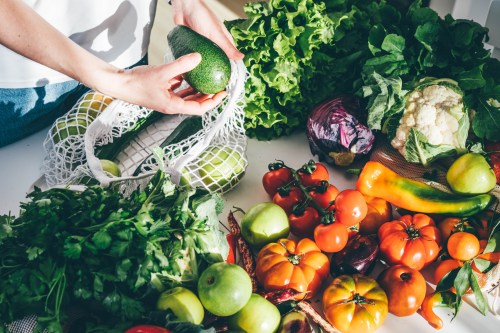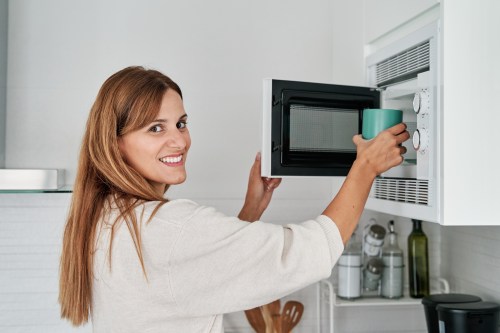‘I’m a Barista, and Here’s How I Make Coffee Without a Coffee Maker for Emergency Caffeine Needs’
Learn a coffee expert’s genius hack to make coffee without a coffee maker for both iced and cold cups of joe.

POV: You check into your lovely Airbnb only to find out they don’t have a coffee machine. Gasp.
Experts in This Article
coffee expert and Q grader
Fortunately, there’s absolutely no need to panic thanks to a genius way to make coffee without a coffee maker in case of a dire emergency (yes, like this one). We recently caught up with Maciej Kasperowicz, a Q grader, coffee expert, and the director of coffee at Trade Coffee, a subscription coffee company connecting small roasters across the United States to coffee lovers, who shared a lifesaving method for making coffee using everyday kitchen tools.
How to make hot coffee without a coffee maker
According to Kasperowicz, making coffee without a coffee maker is actually quite simple—in fact, it’s often how coffee buyers and producers evaluate the quality of the coffee on the job. “When professional coffee buyers evaluate coffee, we use a process called cupping. Instead of making a pour-over or French press, we put coffee grounds in small bowls, pour water into them, and eventually slurp this with a spoon,” Kasperowicz says.
This simple and ultra-reliable method is ideal for brewing coffee no matter where you may be or what equipment you may have on hand. Kasperowicz even recalls that, at times, it was the coffee brewing method of choice for his parents growing up. “It took me years of doing this before I realized that it’s pretty much the same way my parents occasionally made coffee when I was a child,” he says.
That said, having no equipment at hand can pose some challenges. “Does this method have drawbacks? Of course! That’s why we don’t use it when we have actual brewers available,” Kasperowicz admits. First and foremost, he says you’ll have to be cautious about how much you agitate the coffee mixture while drinking it—that is, unless you don’t mind a few ground bits of coffee here and there. “You’ll have to drink it very carefully to avoid shaking up the grinds that settled at the bottom. And, really, you’re only probably drinking like three-quarters of this cup before you get into super-grindy territory,” he says.
However, if you can get your hands on a mesh strainer, it might help eliminate some of the unwanted grittiness. “If you have a mesh strainer around, you could just pour your coffee through that into another mug for coffee that feels like a slightly grimier French press,” Kasperowicz says. Regardless of a little extra grit, he says this cup of coffee is definitely up to the standards of a coffee expert. “That cup is going to be pretty well brewed, especially considering you’re not using any equipment. Remember: it’s really not that different from how we brew coffee for important evaluations,” he says.
Step-by-step for making hot coffee without a coffee maker, otherwise known as “cupping”
- 1.First, pour grounds into your mug (17 grams for a 10-ounce mug, which is about four to five tablespoons for a dark roast).
- 2.Then, pour water, just off the boil, into your mug.
- 3.Eventually, a bit of a crust should form on top of your cup, so break it up with a spoon and try to skim the grounds still floating on top of your mug.
- 4.Wait until it gets to a temperature that’s cool enough to drink (that’ll probably take around 14 minutes, depending on your heat tolerance). By then, the grinds will have settled at the bottom of the mug.
How to make cold brew coffee without a coffee maker
According to Kasperowicz, making cold brew coffee is simpler than brewing a hot cup of joe without a coffee maker, but you do need one essential kitchen tool: a strainer. “Cold brew without any equipment is just as easy, if not easier, as long as you have a strainer. Just toss some coarsely ground coffee into a jar overnight with some water and strain the next day,” he says. Per 10-ounce jar, he recommends using about eight tablespoons of coffee—but you can also use a higher coffee-to-liquid ratio to make an even more concentrated batch. Once the coffee has had a chance to steep in the water, you can simply strain it and pour it over ice to enjoy.
Though straining this mixture without a proper filter will remove most ground coffee particles, it might not work as effectively if your strainer has bigger holes. But Kasperowicz has a quick fix for that, too. “First, while straining, make sure you’re getting all the grinds out from the jar and into your strainer. Then, you’ll want to strain it again, pouring your cold brew through your spent grounds,” he says. In doing so, the grounds themselves will act as a filter, filtering out some of those tiny particles a typical mesh strainer wouldn’t catch. “It won’t make for the kind of perfectly clean cup of coffee you’d get from a paper filter, but it’ll help a ton,” Kasperowicz says.
How to make a DIY dairy-free coffee creamer:
Sign Up for Our Daily Newsletter
Get all the latest in wellness, trends, food, fitness, beauty, and more delivered right to your inbox.
Got it, you've been added to our email list.










